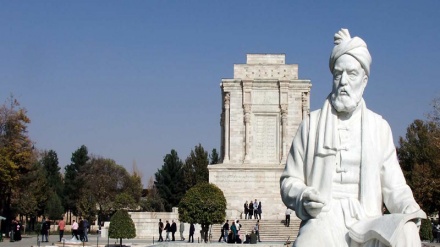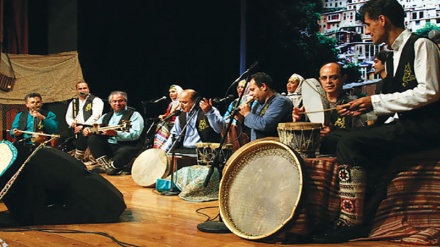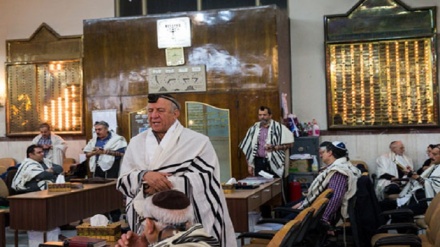Iran, land of various ethnicities (9)
In continuation of studying various ethnic groups in Iran, today we are going to talk about the Azeri people.
According to some of the historical accounts, the Azeri people are from Iranian origin and this is evident from the name of their region, Azarbaijan. It is said this name of Azarbaijan derives from Atropates, an Achaemenian commander, who liberated this region from the occupation of Alexander, the Macedonian marauder. This land was called the Lesser Maad (the lesser land of Medians). The Azeri people of Iran mainly reside in the provinces of East Azarbaijan, West Azarbaijan, Ardebil and Zanjan. Moreover, there are smaller Azeri ethnicities which are scattered in Hemadan, Qazvin, Fars, North Khorasan, Gilan and Markazi provinces. Some researchers have tried to ignore the real origin of the Azeri people to say that they are not affiliated with Turkic people but what is evident from their features and language clarifies the fact that originally they are Turks. But as it is usual for every language and ethnic group they have lost some of their traditions and adopted some other ones while they have enriched their neighboring ethnicities with their own traditions in return. The point to note is that as a result of the Russian invasion during the 19th century some parts of Iran were forcibly separated from Iran including much of the Caucasus and annexed to the Russian Empire. This region includes the present day Republic of Azerbaijan, too. The humiliating imposed treaties of Golestan and Turkmanchai designated the new Iran-Russian borders. Following the collapse of the Soviet Union in 1991, the Republic of Azerbaijan gained independence and was introduced as a sovereign country.
The Azeri people constitute 25% of the entire population in Iran. The most important section of Azeris is the Shahsavan people who have resided in Azarbaijan and Ardebil regions since the era of the Safavid king Shah Ismail in the 15th century. The second ethnic group is the Qezelbash. The Qezelbash have lived in Azerbaijan, especially in the vicinity of Meshkin Shahr and Ahar cities before the Safavid era. Arasbaran is the third ethnic group. The nomads of Arasbaran ethnic group spend most of their life in the forests and mountains while they maintain a migratory lifestyle. In summer they usually go to the high altitudes of Qara Dagh (Arasbaran) mountains, Khalkhal and Asalem while in winter they migrate to the low areas of Dasht-e Moghan (Moghan Plain), Germi and the banks of Aras River. The official ceremonies and feasts of the Azeri people includes religious ones such as Eid al-Azha, Eid al-Qorban, Eid al-Fitr, national feasts like Nowruz and social ones such as marriage proposal, wedding, harvest and so on. These events specially include games and ceremonies. Due to the broadness of these ceremonies we will dwell upon them in separate episodes.
The handicrafts of the Azeri people include Jajim (a special kind of two-sided flat-weave rug), carpet, felt rug, and different types of wooden, stone and metal wares. Furthermore, the pastries, nuts and dairies of Azeri people are famous throughout Iran and even abroad. The tourist attractions and picturesque areas of the Azeri speaking regions include myriads of beautiful places in and around the cities of Tabriz, Ardebil, Urumieh, Ahar, Kaleibar, Maku, Sare’in, Marand, Khalkhal, Khoy, Meshkin Shahr, and so on. The Arasbaran forests are one of the beautiful places for tourists and nature travellers. Dalamper Mountain with over 3500 meter height is a very scenic place near Urumieh in West Azarbaijan which attracts many lovers of nature and tourists especially in spring and winter.
Furthermore, there are myriads of natural spas on the slopes of Sabalan and Sahand mountains and around Aras River.
There are many commonalities in the clothes of Azeri women but the dresses of the women of Ardebil are generally considered as the epitome of the Azeri women’s clothing especially among the nomadic and rural women. Many of the Azeri men, particularly in villages, wear suit and chapeau hat. Meanwhile, women’s clothes include special loose trousers called Tonban, a special dress called Shalitah, a special vest with patch-work and coins on it. They also wear a small headscarf and a bigger one called Chargat which is decorated with flowers and nice designs.
RM/EA


